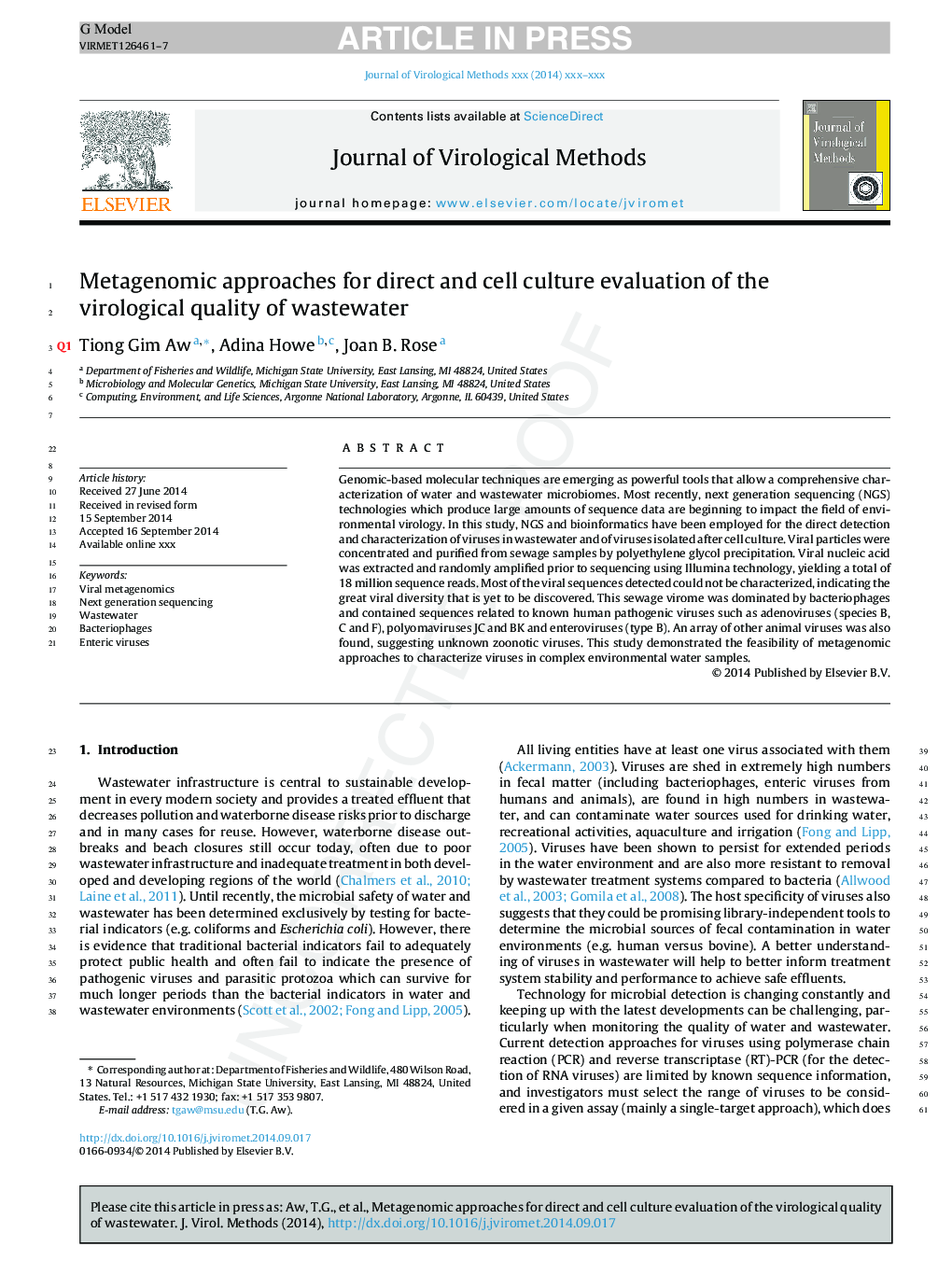| Article ID | Journal | Published Year | Pages | File Type |
|---|---|---|---|---|
| 6133436 | Journal of Virological Methods | 2014 | 7 Pages |
Abstract
Genomic-based molecular techniques are emerging as powerful tools that allow a comprehensive characterization of water and wastewater microbiomes. Most recently, next generation sequencing (NGS) technologies which produce large amounts of sequence data are beginning to impact the field of environmental virology. In this study, NGS and bioinformatics have been employed for the direct detection and characterization of viruses in wastewater and of viruses isolated after cell culture. Viral particles were concentrated and purified from sewage samples by polyethylene glycol precipitation. Viral nucleic acid was extracted and randomly amplified prior to sequencing using Illumina technology, yielding a total of 18 million sequence reads. Most of the viral sequences detected could not be characterized, indicating the great viral diversity that is yet to be discovered. This sewage virome was dominated by bacteriophages and contained sequences related to known human pathogenic viruses such as adenoviruses (species B, C and F), polyomaviruses JC and BK and enteroviruses (type B). An array of other animal viruses was also found, suggesting unknown zoonotic viruses. This study demonstrated the feasibility of metagenomic approaches to characterize viruses in complex environmental water samples.
Related Topics
Life Sciences
Immunology and Microbiology
Virology
Authors
Tiong Gim Aw, Adina Howe, Joan B. Rose,
